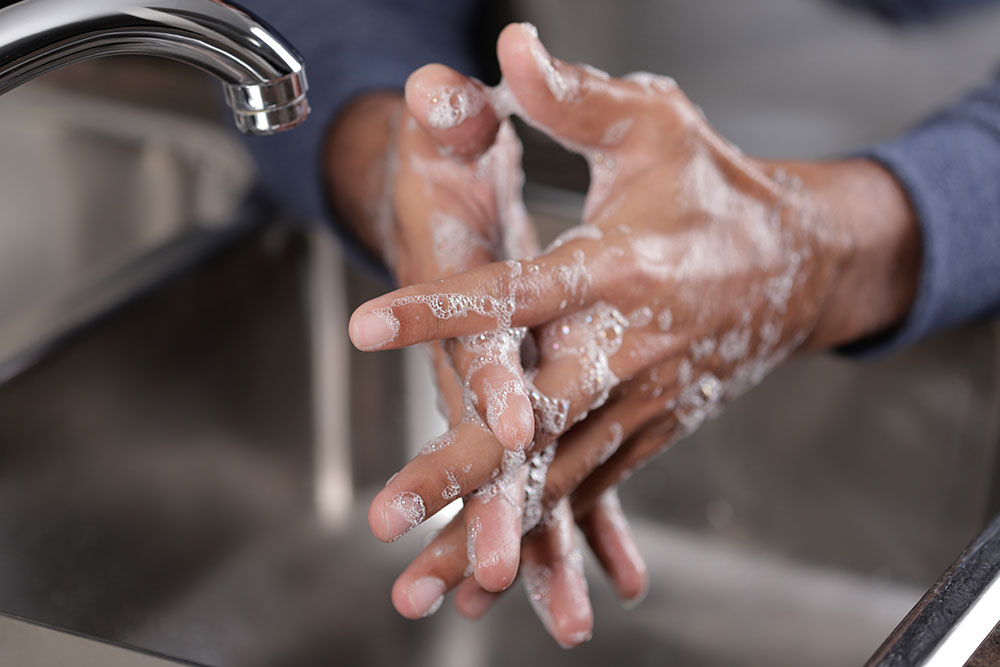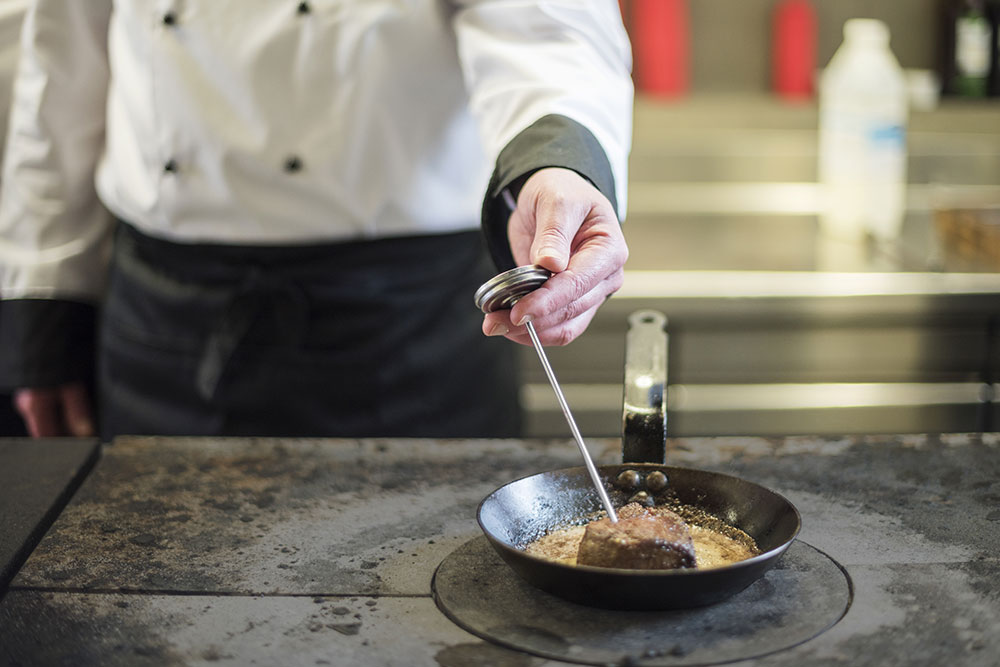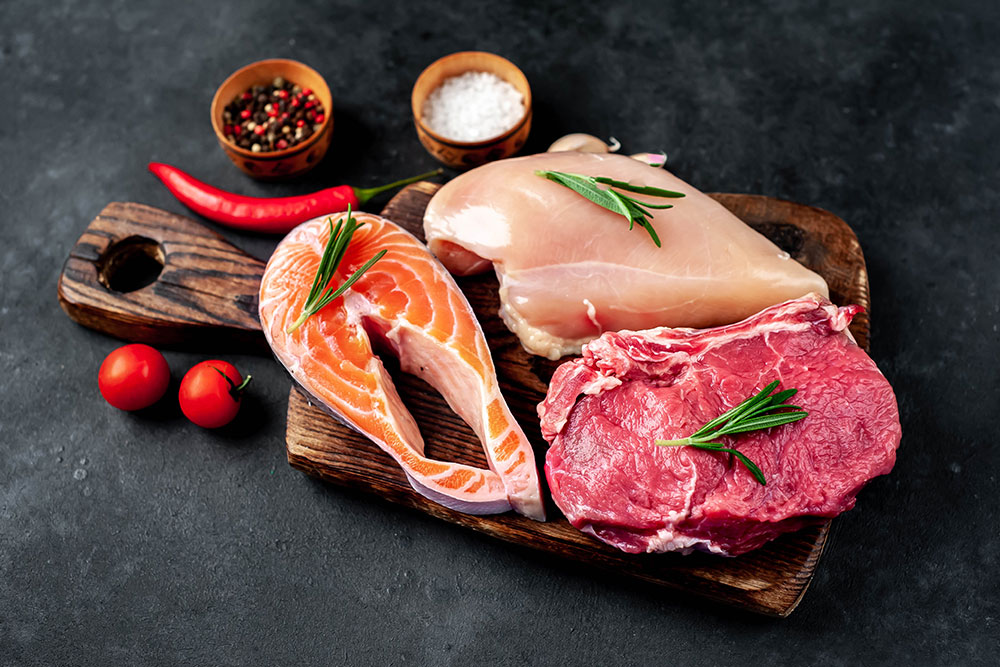
Cooking is complicated. Decisions need to be made quickly. Whether preparing food for paying customers or family and friends, you’re always up against a ticking clock.
But no matter the situation, you can never sacrifice food safety. That’s why any chef needs an understanding of the 4 Cs of Food Safety – easy-to-follow guidelines that prevent the most common food safety failures.
Check out our guide to learn the four Cs and how to apply them when working with food. Getting them right will help avoid foodborne illness, protect your patrons and maintain trust in your kitchen to deliver hygienic, safe dishes. We can’t promise they’ll taste any better, though.
What are the Four Cs?
The four Cs are industry guidelines anyone should follow when working with food. By following the four Cs, you can avoid the most common hygiene issues that make food unsafe.
The four Cs are:
- Cleaning
- Cooking
- Chilling
- Cross-contamination
Each one is a reminder of the critical kitchen dos and don’ts that keep food safe.
Why are the Four Cs Essential?
Duty to Customers
Any restaurant, café or food retailer must maintain food hygiene standards to succeed. Customers must be able to trust that whatever establishment they purchase food from supplies decent and safe food. Low food hygiene ratings or customer horror stories risk your business’ success.
Moral Duty
And this is before you consider the moral duty any chef has. Foodborne illness can make people seriously sick. You might not just be putting a customer off from returning; you might be placing them at serious risk. The Food Standards Agency, which advises on food hygiene in the UK, estimates there are 2.4 million cases of foodborne illness each year, which includes 380,000 cases of norovirus.
Financial Duty
Finally, there’s the legal duty.
The Food Safety Act 1990 is the legislation businesses must follow in the UK when selling food. It creates the framework for all food legislation in England, Wales and Scotland and is enforced by the Food Standards Agency (FSA)
The four Cs are not explicitly enforced by the Food Safety Act, but they’ve become widely accepted as best practices in the industry. This adoption is because they’re helpful, straightforward guidelines that help you comply with one of the primary responsibilities laid out by the Food Safety Act:
“Businesses do not include anything in food, remove anything from food or treat food in any way which means it would be damaging to the health of people eating it.”
You should expect the four Cs to form the foundation of any high-quality food safety training programme. And since food safety legislation does require all staff to have adequate training in this area, the overwhelming majority of businesses and workers in the food industry see the four Cs as essential knowledge.
How to Use the 4 Cs of Food Safety
Each of the four Cs outlines the guidelines you should follow when working with food. They cover the whole procedure, from prep to storage, so they’re often presented in order. This arrangement makes it easier for busy cooks to follow each step as they work.
Cleaning
First, you must ensure that any area where you prepare food is clean and hygienic. Use food-safe cleaning products to thoroughly scrub any surface or space you use for cooking. And be sure to leave any disinfectants on surfaces for the recommended amount of time to ensure they’re effective.
You’ve got to do the same with any equipment you will be using too. Prepping food on a dirty chopping board or with an unclean utensil is one of the most common ways for contaminants to spread.
Almost all professional kitchens will have some cleaning schedule to follow to minimise this risk. But don’t just rely on the schedule; check any surface you’re using for food prep is clean, safe and ready before you get to work.

Cleaning Hands
The first C is more concerned with cleaning surfaces and utensils. Still, it’s a good reminder of the importance of personal hygiene too. After experiencing the coronavirus pandemic, we’re all much more confident hand washers, but the FSA provides guidance specifically for food professionals.
Cleaning Food
You should wash fruits and vegetables before any prep work. A good scrub, either under a running tap or in a container of fresh water, should remove any residual soil or debris that might be carrying contaminants.
Don’t do the same for raw meat, however. Washing chicken, fish or other animal products risks spreading harmful bacteria around your kitchen. To kill off any potentially harmful microbes in meat, you must follow best cooking practices – the next of the four Cs.
Cooking
You need to cook certain foods at the right temperature and for the right amount of time to be sure they’re safe to eat.
The guidelines vary between food products, so follow any manufacturer’s guidelines. If no instructions are provided, you should follow the FSA’s advice. Particularly when cooking meats, which are more likely to contain harmful microbes than other foods. In fact, the FSA recommends you always thoroughly cook the following products:
- Poultry (chicken, turkey, duck – anything with wings)
- Pork
- Minced meat products (burgers, kebabs, sausages)
- Offal (kidneys, livers, etc.)
- Rolled joints

Generally, when cooking, you want to get food to a core temperature of 70°C for at least two minutes. This should be sufficient to kill any germs or bacteria. You can also follow other combinations of time and temperatures to achieve the same goal.
You can also check a few things to confirm meat is cooked thoroughly. Before serving, you should be sure that:
- Foods are piping hot the entire way through
- Juices are running clear
- There’s no pink or rare meat inside
Chilling
It might not make immediate sense to think about chilling after cooking. Still, refrigeration helps prevent harmful bacteria from growing in cooked and uncooked foods. The FSA also recommends you chill the following:
- Prepared foods, such as salads
- Products with a use-by-date
And to make sure refrigeration is adequate, you should:
- Follow the manufacturer’s storage instructions
- Allow cooked food to cool before being put in the fridge
- Put foods that need to be chilled in the refrigerator as soon as possible
- Keep chilled foods out of the fridge for the shortest amount of time possible
- Maintain fridges at a low enough temperature to be effective
A ‘low enough temperature’ is 8°C according to legislation, but the FSA recommends 5°C or lower to be sure.

Freezing Food
Chilling food prevents harmful bacteria from growing, but freezing stops it dead in its tracks. There are still some things you need to keep in mind when working with frozen foods, however. You should always:
- Freeze fresh foods as soon as possible (if you need them frozen)
- Put any delivered frozen foods into a freezer as soon as possible
- Freeze any food with a use-by-date before that date has passed
Defrosting Food
It’s best practice to defrost foods in the fridge as this keeps products at a safe temperature during thawing.
If you find yourself without the time to do this, however, you can either defrost food in a bowl of cold water or use a microwave with a dedicated defrost setting.
Cross-Contamination
Cross-contamination is all about avoiding harmful microbes spreading between foods in your kitchen.
It’s likely to happen because of:
- Raw foods coming into contact with cooked foods
- Equipment being shared between raw and cooked foods without cleaning first
- Handling both raw and cooked foods without washing your hands

To avoid these three issues, you should follow the FSA’s guidance:
- Wash your hands before handling cooked/prepared foods
- Clean surfaces and utensils thoroughly (which you’ll be doing already if you’re following the four Cs)
- Use different equipment for high-and low-risk foods (various colour chopping boards are essential for this)
- Store raw foods below cooked foods in the fridge to prevent any drips/spills from raw products contaminating the ready-to-eat foods
- Keep separate surfaces and storage areas for different foods (and keep separate cleaning supplies for each space too)
Other Food Safety Fundamentals
The four Cs are fundamental to food safety but don’t cover everything you need to know when working with food. And by law, business owners must give their employees adequate training before they can safely handle food. This training can come on the job. But in a busy kitchen, it’s probably best to arrive for your shift already knowing what you need to do to keep customers safe.
Our online Level 2 Food Hygiene Course covers everything you need to know to prevent foodborne illness in your kitchen. You’ll get a full explanation of the four Cs and how they function in a professional environment. You’ll be able to keep food hygiene standards high, prevent foodborne illnesses from spreading in your kitchen and maintain customers’ trust in your establishment.





















































































































































































































































































































































































































































































































































































































































































































































